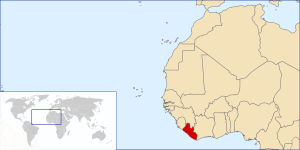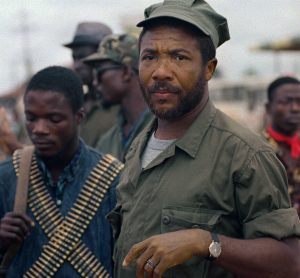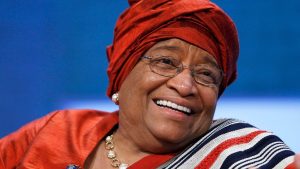 Some Liberia history
Some Liberia history
Not much is known about the early history of what is now Liberia, located at the fringes of the great West African empires further inland, like the early Ghana, Mali and Songhai empires. As always, it was the Portuguese who were the first Western power to arrive, in 1462; they called the coast the Pepper Coast, or the Grain Coast (also referring to pepper grains), a commodity widely available and sought after by gourmet European cooks. The Dutch established a trading post in 1602, but left again 60 years later. The British arrived shortly after, also for trading purposes only, but – strangely – there is no knowledge of further settlements along this stretch of coast.
Until the first black Americans arrived, in 1821 (or 1822), following an initiative of the American Colonization Society, who had identified the Grain coast as a suitable home for freed American slaves – long before formal abolition in the US in 1865. Whether the place was indeed suitable is debatable, because less than 40% of the new arrivals between 1821 and 1842 survived, but with American help, several colonies were ‘agreed’ with the leaders of local tribes over the next 15 years, or so. Not necessarily in agreement with all the local people, of course, who saw these strangers as invaders to their land. Yet, the new colonies gained in strength, perhaps also through tacit support of the Americans, if not the American government, and they amalgamated, and ultimately declared independence as the Commonwealth of Liberia in 1847. Oh, and the new Americo-Liberians, as the descendants of African Americans became known, treated the locals as second class citizens, of course – just like they had been treated themselves back in the USA. Racism based on skin colour? Nah, it has all to do with perceived social class.
Well, and for the next 133 years it stayed like that, a segregated society with a small elite of Americo-Liberians at the top, and a disenfranchised native population. Who grew increasingly restless and discontented, especially after Liberia did economically well, out of the deal with Firestone, a tyre company in need of Liberia’s rubber. During the Second World War, Liberia even became the Allied rubber supply, but any financial benefits were creamed off by an increasingly corrupt administration, largely made up of this elite, of course. The African solution? A military coup, exercised in 1980 by sergeant Samuel Doe, soon after to be promoted to general Doe. And, with return to civil rule, president Doe, in 1986, but not after he had murdered scores of potential opponents ahead of the elections. Paranoid of further coup attempts against him, Doe then unleashed a civil war, setting up tribes against each other. And through his cruel regime alienating himself from his hitherto donor, the US, who cut off aid, after which the local economy collapsed.
The next coup did come. One Charles Taylor invaded the country with a group of rebels, called the National Patriotic Front of Liberia, from Cote d’ Ivoire in 1989, and immediately found support from several tribes. To complicate things, one of co-leaders than split off to form the Independent National Patriotic Front of Liberia (not very creative, these rebels), and both factions then battled the government from different directions. This prompted the surrounding West African countries to mobilise an intervention force, ECOMOG, to restore order. You never know exactly what happened, of course, but in 1990 Doe was captured, tortured and killed – in that order – by the Independent NPFL, inside the ECOMOG headquarters. This didn’t stop the fighting, though, which went on to 1997, when an agreement was reached between the main militias, and elections could be held. And guess what, Charles Taylor won!
(In the national museum I saw that the supporters of Taylor used the slogan “he killed my ma, he killed my pa, but I will vote for him, or he’ll kill me”. Right!)
This didn’t stop the fighting, either, just abated it somewhat. Taylor himself did whatever he could to eliminate potential rivals, but his real downfall came because his aiding of the civil war in Sierra Leone, for which he was indicted by a UN-led war crimes tribunal. He had to step down, and went in exile in 2003; he was captured and extradited three years later, and convicted for crimes against humanity in 2012.
Somehow, peace returned to Liberia with the departure of Taylor. After a brief interim national council, and the presence of significant foreign peace keeping forces, as well as American marines, to convince the various rebel groups to stick to a peace agreement, the next elections were won by the formidable Ellen Johnson Sirleaf, in 1995. With a lot of international goodwill, and a lot of support, she managed to put Liberia back on track again, subsequently did not change the constitution after she had served two terms, and handed over to the next democratically elected president, ex-football star George Weah. There is hope again, for Liberia. Even though the running mate and now vice-president is the ex-wife of Charles Taylor.
Now, a little exercise: go and Google pictures of Charles Taylor – images only. Look at all the photos, and notice that he never smiles, never laughs, not in his early years, not later as president, or as defendant in court. Now Google – images only – Ellen Johnson Sirleaf…
Next: into Liberia












What a difference!